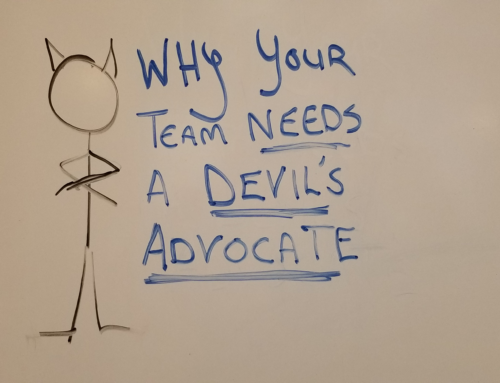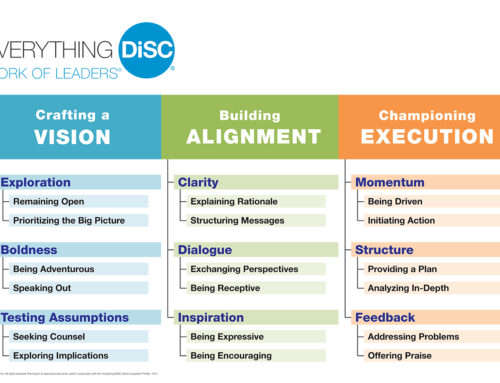(From Mona Earnest, Speaker, trainer, HR consultant and partner at Encore Life Skills)
Yesterday, I taught a course on Cultural Intelligence for the State of Oklahoma Office of Management & Enterprise (OMES).
Just as your own Intelligence Quotient (IQ) can be measured, so can your Cultural Quotient (CQ). Harvard Business Review defines it as “Cultural intelligence: an outsider’s seemingly natural ability to interpret someone’s unfamiliar and ambiguous gestures the way that person’s compatriots would.”
The biggest thing I noticed when was an immigrant to the United States is that this is such an amazing country with many cultures living side by side.
Oklahoma City has a Vietnamese district of restaurants and a large grocery market. There is also a large Southeast Indian, Persian, Hispanic and of course, a rich Native American culture. The universities in the area have flourishing International Studies programs. All of these are reasons why in 2016, Oklahoma City was named one of the nine metropolitan areas for creating an inclusive culture! Surprised? Don’t be!
There aren’t many areas in the US that don’t have a cultural impact (inclusion and race). I usually tell my students that you don’t have to go further than your local Wal Mart to find the varied diversity in any US city. If you are even more curious, go to the Ethnic Food aisle at Wal Mart and see how many languages are being spoken there.
Americans don’t give ourselves credit for taking inventory of how much we already know about a particular culture. Growing up with friends from different areas, educational level, socioeconomic status and even generational differences all account for cultural diversity. However when the term “Diversity” is mentioned, we focus on black and white – we are the ones who make it about race only, missing out on the rest of the things that make diversity exciting.
One can easily measure their level of cultural knowledge by taking a Cultural Intelligence quiz online (there are several free ones available – just do a search!). It’s a quick test that takes a look at the four quadrants of Cultural Intelligence (Drive, Cognition, Meta-Cognition and Action). A high score is NOT what you are after on this test. It’s more to show you where you can improve in each area. This is the first step in developing and increasing your cultural knowledge. Application and adaptation are the next two steps.
CQ is quickly becoming a need for managers and leaders. Knowing how to work across cultures to increase productivity is KEY in any workplace or organization. It’s important to note here that the term “culture” also include generational differences. This is one of the main areas I have had to address over the last few years, as the Baby Boomer population decreases and the Millennials increase in the workplace.
The main question that arose from the Cultural Intelligence session yesterday was how far do you go to accommodate another culture before you blur the lines between who you are and the values you hold?
The main question that arose from the Cultural Intelligence session yesterday was how far do you go to accommodate another culture before you blur the lines between who you are and the values you hold?
This is a good question to consider. It is truly based upon your own values, beliefs and also your organizational culture and beliefs. If those are in alignment, then the decision making comes easily. If they are not congruent, then there can be dissonance. As a manager, it’s very important to allow for “reasonable accommodation” for an employee’s ethnicity, religion, or other consideration. Flexible time and PTO help to give tremendous creativity on how that time is used. The issue becomes more blurry when ethics come into play. I believe it’s important to stress that when a leader focuses in on one person’s needs or issue (due to inclusion or diversity needs), that that they don’t alienate the other 99 in the office. So taking the big picture into account is a good way to start. Solving issues in a team is also another approach. This will actually allow others to learn more about the culture and do creative problem solving together. The only caveat to this is if the employee wants the issue to remain confidential, so before taking a team approach, ask employee permission.
The bottom line in any diversity or inclusion initiative is to address each employee with dignity and respect. That is a common ingredient that crosses global, ethnic, and cultural boundaries. If we stop for a minute to think about what is getting ready to come out of our mouth and take time to analyze the situation, then CQ is already at work. The knee-jerk reaction rarely works when all these factors are involved. Take a moment, think, analyze and give benefit of the doubt to the other party. That is something that will help a manager not just handle cross-cultural issues but most communication issues.
Republished from the Blog of Mona Saba Earnest, May 6, 2016
Mona Earnest, MRHROD is a partner at Encore Life Skills. Learn more about Mona, click here.
Contact Mona at mona@encorelifeskills.com






Leave A Comment